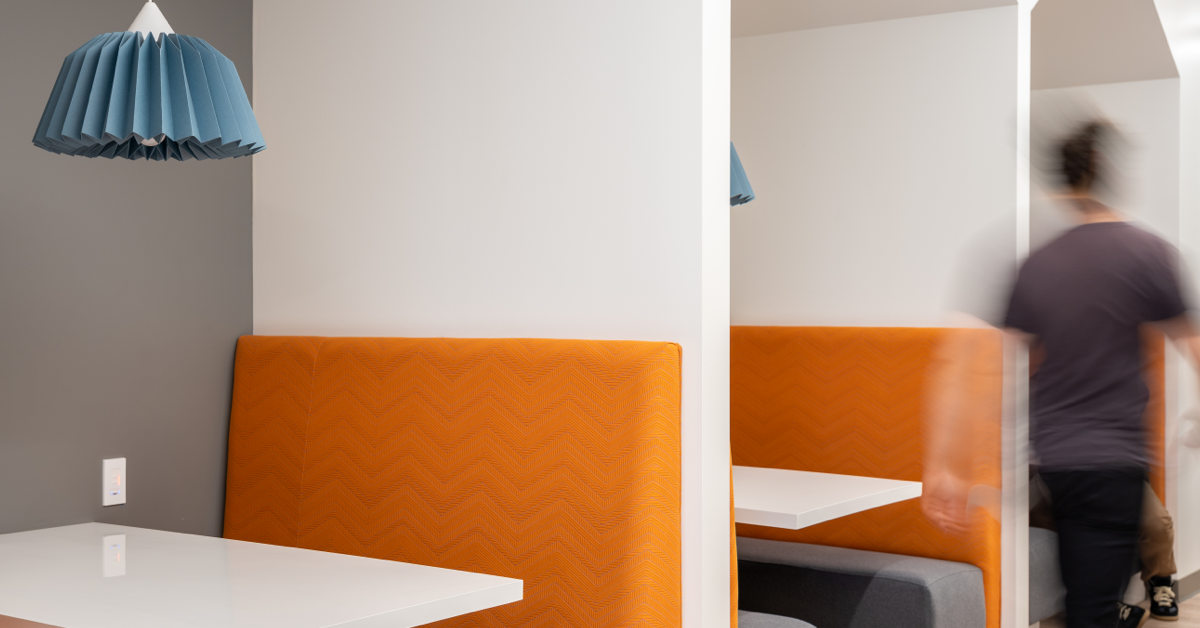
Upon thinking about workplace danger, environments like coal mines or meatpacking plants seem notoriously unsafe, with ghastly conditions detailed in shocking books like The Jungle by Upton Sinclair.
However, office buildings were never quite as treacherous. This changed when the Triangle Shirtwaist Factory fire, which killed nearly 150 workers, became a landmark moment for workplace safety. It sparked a movement for reform that would culminate in Congress passing the Occupational Safety and Health Act (OSHA) in 1970.
Fast forward 50 years, and everyone agrees that workplace safety is of paramount importance to any modern business and workforce. In virtually any industry, there are fire alarms, carbon monoxide detectors, total volatile organic compound (TVOC) monitoring, eyewash stations, defibrillators, and many more safeguards to protect employees.
Still, modern offices are far from an ideal environment. Studies have found that up to 30% of new and remodeled buildings have poor air quality, according to the U.S. Consumer Product Safety Commission (CPSC), and occupants often suffer. This is the dirty secret—quite literally—that continues to plague the workplace.
In this blog, we explore the impacts of poor air quality on employee health and productivity and why businesses should invest in environmental sensors to optimize for clean indoor environments.
Environmental Hazards in the Workplace and Sick Building Syndrome
To this day, the Environmental Protection Agency (EPA) warns against sick building syndrome (SBS), which can cause indoor workers to “experience acute health and comfort effects,” and "building related illness" (BRI), which occurs when "diagnosable illness are identified and can be attributed directly to airborne building contaminants."
Based upon many cases, employers see ongoing employee complaints even before the indoor air quality standards outlined in federal regulations are exceeded.
Even buildings that seem innocuous can pose a significant health hazard when they lack adequate ventilation, contain biological contaminants (mold, pollen, and bacteria), or introduce chemical contaminants which arise from common sources including carpeting, upholstery, cleaning products, pesticides, or even copy machines.
Beyond the obvious need to safeguard workers, companies face additional hidden costs. Poor indoor air quality management can lead to more employee time off, lower productivity, and even the need to hire additional staff, among other human resources, staffing, and wellness concerns.
Monitoring Indoor Air Quality and Building Environments with Verkada's Environmental Sensor
New technologies, like the Verkada's Environmental Sensors are available from Verkada, have a major role to play in this space. They make it easy and affordable to monitor indoor air quality to help ensure that hidden variables within your buildings don’t pose a risk to employee safety.
In addition to air quality monitoring, Verkada offers seven other onboard sensors that monitor and alert teams of changes in particulate matter (measuring PMs), total volatile organic compounds (TVOCs), smoke and vape, motion, temperature, humidity and noise.
Though compliance regulations vary across industries, an all-in-one sensor that can keep workers healthier, reduce sick days, and increase productivity are well worth the investment.
Integrating Smart Sensor Solutions Into Your Building Management Platform
In addition to uncovering unseen insights, Verkada’s sensor solution is also highly scalable. Sensors can be installed in no time with little investment, which makes covering an extra floor—or covering several new buildings—almost effortless. The solution is brought online and fully operational instantly, making the return on investment immediately clear.
Best of all, Verkada's Sensor lineup natively integrates with Verkada’s video security and access control solution. Just by adding one extra component to an already robust building security system, it’s simple to introduce air quality monitoring to the wider enterprise mission to protect worker safety.
With a streamlined repository of live and historical data on Command, Verkada’s cloud-based management platform, it’s easy to identify and respond to trouble areas at scale. In analyzing air quality monitoring data, teams might discover trends that explain ongoing problems—such as why workers in specific cohorts get sick in groups and miss days in the office.
Proactively Monitor Indoor Air Quality for Buildings with Real-time Alerts
Should teams be short-staffed or not have the bandwidth to actively monitor environments on a regular basis, they can set proactive alerts that notify them of unusual changes—then look into the occurrence from the convenience of their smartphone, tablets or desktop.
With all the data and controls in one intuitive platform, there is no need for onboarding regardless of technical expertise. Data points across all security solutions are brought together to tell a comprehensive story of site health.
Improving Health and Safety Across Environments with Smart Sensor Technology
Sensors and the overall rise of smart buildings has led to a lot of ambitious solutions that reimagine what it means to improve the workplace. Here at Verkada, we approach safety with a software-first approach and hope to make buildings as seamless and modern as the workforces we work to protect.
Want to learn more about how to keep your buildings and employees safe? RSVP for our upcoming webinar to learn about additional capabilities and benefits of Verkada’s Environmental Sensors.



